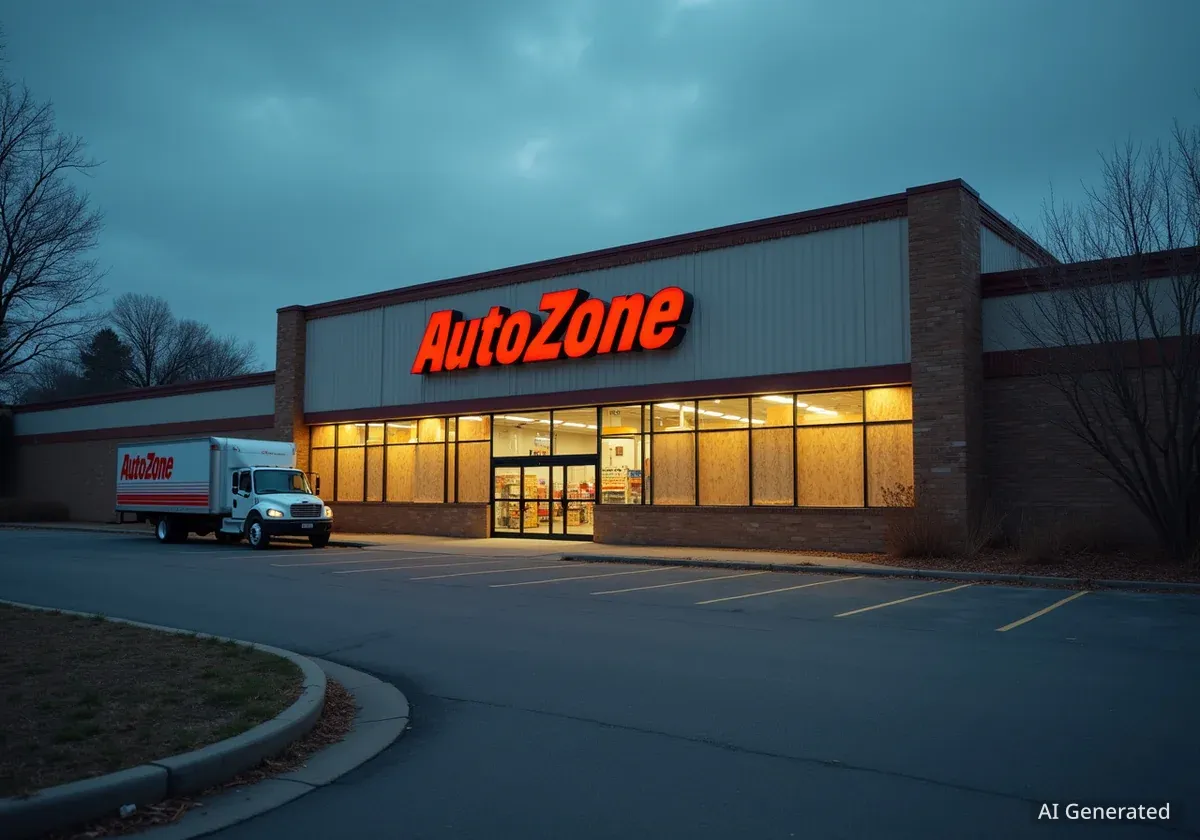The greater Dayton, Ohio, commercial real estate market has experienced a significant surge in investment activity, with recent transactions totaling more than $115.1 million. This influx of capital, spread across industrial, multifamily, and retail properties, highlights growing investor confidence in the region's economic stability and future growth prospects.
The deals reflect broader national trends, including strong demand for logistics facilities and rental housing, while also underscoring the unique strengths of the local Dayton economy, which is supported by the aerospace, defense, and healthcare sectors.
Key Takeaways
- Over $115.1 million in major commercial real estate transactions were recently completed in the Dayton area.
- The industrial and logistics sector led the activity, driven by e-commerce and supply chain demand.
- Multifamily properties, particularly apartment complexes, attracted significant investment due to strong rental demand.
- The transactions signal robust investor confidence in the Dayton market's economic fundamentals.
Industrial Sector Dominates Investment Activity
The largest portion of the recent transaction volume originated from the industrial and logistics sector. The strategic location of Dayton, often called the "Crossroads of America," makes it a prime hub for distribution and manufacturing. Proximity to major highways like I-75 and I-70, along with the Dayton International Airport, continues to attract national and international companies.
One of the most significant deals was the acquisition of a newly constructed 500,000-square-foot distribution center near the airport corridor. The property was sold for approximately $48.5 million to an out-of-state Real Estate Investment Trust (REIT) specializing in logistics facilities. This single transaction accounted for over 42% of the total investment volume.
Why Logistics is Booming in Dayton
The Dayton region's industrial market benefits from its ability to reach a significant portion of the U.S. population within a day's drive. According to a regional development report, approximately 60% of the U.S. population and manufacturing capacity is accessible within 600 miles. This logistical advantage is a primary driver for investments in warehousing and distribution centers.
Rise of E-Commerce Fuels Warehouse Demand
The sustained growth of e-commerce is a major factor fueling the demand for modern logistics space. Companies are increasingly seeking state-of-the-art facilities with high ceilings, ample loading docks, and advanced automation capabilities to streamline their supply chains.
"We are seeing unprecedented demand for Class A industrial space in the Dayton market," stated a representative from a local commercial brokerage firm. "Investors are willing to pay a premium for new, well-located assets that can serve the needs of modern logistics operators. The $48.5 million sale is a testament to that confidence."
Another notable transaction in this sector involved a 150,000-square-foot manufacturing facility in the northern suburbs, which was acquired by an Ohio-based company for $14.2 million as part of a strategic expansion.
Multifamily Properties Attract Strong Investor Interest
The multifamily housing market was another key area of investment, with several large apartment complexes changing hands. These transactions reflect the high demand for rental housing in the region, driven by steady job growth and a growing population.
A 250-unit apartment community in Beavercreek was sold to a national property management firm for $32 million. The buyer reportedly plans to invest in capital improvements to modernize the units and common areas, aiming to capitalize on rising rental rates in the suburban market.
Dayton Rental Market Snapshot
- Average Occupancy Rate: 96.5%
- Year-over-Year Rent Growth: 5.8%
- Most Desirable Submarkets: Beavercreek, Kettering, Centerville
Data based on recent market analysis reports.
Experts note that multifamily properties are seen as a stable investment class, providing consistent cash flow even during periods of economic uncertainty. The presence of major employers like Wright-Patterson Air Force Base and large hospital networks such as Kettering Health and Premier Health provides a reliable tenant base.
In a separate deal, a portfolio of three smaller apartment buildings in Kettering, totaling 120 units, was acquired by a regional investment group for $11.8 million. This demonstrates that investor interest extends beyond large, institutional-grade assets to include smaller, value-add opportunities.
Retail and Office Sectors Show Signs of Stability
While the industrial and multifamily sectors saw the largest deals, the retail and office markets also contributed to the overall transaction volume, indicating a level of stability and targeted investment.
Grocery-Anchored Retail Remains Resilient
A grocery-anchored shopping center in Centerville was sold for $15.6 million. The 100,000-square-foot plaza is anchored by a major national supermarket chain and includes a mix of national and local tenants. This type of retail asset remains highly sought after by investors because of its non-discretionary, necessity-based tenants, which provide reliable foot traffic and income.
Unlike other segments of the retail market that have struggled with the rise of e-commerce, neighborhood centers focused on daily needs have proven to be resilient. Investors see them as a safe bet for long-term returns.
Office Market Adapts to New Realities
The office sector saw a more modest transaction, with a 50,000-square-foot suburban office building selling for $7.5 million. The property, located near the I-675 corridor, is fully leased to a mix of professional services firms.
While the broader office market is still adapting to hybrid work models, high-quality, well-located buildings with stable tenants continue to trade. Investors are focusing on properties that offer modern amenities and easy access for commuters, a trend known as the "flight to quality."
Outlook for the Dayton Real Estate Market
The combined $115.1 million in recent transactions paints a positive picture of the greater Dayton real estate market. The diversity of the assets sold—from massive distribution centers to neighborhood shopping plazas—suggests a healthy and balanced investment landscape.
Economists and real estate analysts believe this momentum is likely to continue. The region's strong economic fundamentals, strategic location, and affordable cost of living relative to other major metropolitan areas make it an attractive target for both national and regional investors.
As long as demand for logistics space remains high and the housing market stays tight, Dayton is well-positioned to see continued investment across its commercial real estate sectors in the coming months.





